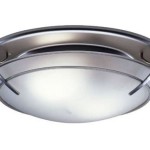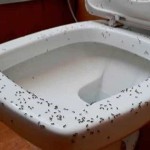Best Ways to Clean Bathroom Tile Grout
Bathroom tile grout, often overlooked in routine cleaning, is highly susceptible to discoloration and the accumulation of dirt, mildew, and soap scum. Its porous nature makes it a breeding ground for these unsightly and potentially unhygienic elements. Regular and effective cleaning of grout is crucial for maintaining the aesthetic appeal and sanitary conditions of a bathroom. Several methods exist for tackling this challenge, each with varying degrees of effectiveness and suitability depending on the severity of the grime and the type of grout used.
This article will explore several methods for cleaning bathroom tile grout, outlining the materials needed, the steps involved, and the advantages and disadvantages of each approach. By understanding these options, homeowners can make informed decisions about the cleaning methods best suited for their specific needs and circumstances.
Understanding Grout Types and Their Vulnerabilities
Before embarking on any cleaning endeavor, it is important to identify the type of grout used in the bathroom. Common grout types include cementitious grout (sanded and unsanded) and epoxy grout. Cementitious grout, the most prevalent type, is porous and absorbent, rendering it vulnerable to staining and the penetration of moisture, which can facilitate mold and mildew growth. Sanded grout contains sand particles, making it more durable and suitable for wider grout lines, while unsanded grout is smoother and ideal for narrower joints. Epoxy grout, on the other hand, is non-porous and resistant to stains, chemicals, and water. Identifying the grout type will determine the appropriate cleaning agents and techniques to employ.
Consideration should also be given to the color of the grout. Lighter-colored grout will exhibit staining and discoloration more readily than darker grout. Furthermore, certain cleaning agents may cause fading or discoloration of colored grout, requiring pre-testing in an inconspicuous area before widespread application.
Cleaning Methods: A Comprehensive Overview
Several methods can be employed to clean bathroom tile grout, ranging from simple household solutions to more aggressive chemical treatments. The choice of method should be guided by the severity of the staining, the type of grout, and personal preferences regarding the use of chemical cleaners. Testing any cleaning solution in a small, hidden area is always recommended to ensure it does not damage the grout or tile.
1. Warm Water and a Stiff-Bristled Brush: This is the gentlest approach and is suitable for routine cleaning and light soil. The process involves wetting the grout lines with warm water and scrubbing vigorously with a stiff-bristled brush. A toothbrush or a specialized grout brush can be used for this purpose. The mechanical action of the brush loosens dirt and surface stains. After scrubbing, rinse the area thoroughly with clean water and dry with a clean cloth.
Advantages: Non-toxic, readily available, inexpensive, and suitable for routine maintenance.
Disadvantages: May not be effective for deeply embedded stains or mildew, requires significant effort, and may not be suitable for large areas.
2. Baking Soda Paste: Baking soda is a mild abrasive and can be used to create a cleaning paste. Mix baking soda with water to form a thick paste. Apply the paste to the grout lines and let it sit for several minutes. Scrub with a stiff-bristled brush and rinse thoroughly with clean water. Baking soda's mild alkalinity helps to neutralize acidic stains and deodorize the grout.
Advantages: Non-toxic, readily available, inexpensive, and effective for removing light stains and deodorizing.
Disadvantages: May require repeated applications for stubborn stains, requires scrubbing, and can leave a powdery residue if not rinsed thoroughly.
3. Baking Soda and Vinegar: This combination creates a fizzing action that can help loosen dirt and grime. First, sprinkle baking soda onto the grout lines. Then, spray vinegar onto the baking soda. The mixture will fizz. Let it sit for several minutes, then scrub with a stiff-bristled brush. Rinse thoroughly with clean water. It is essential to note that while this method is popular, the chemical reaction between baking soda and vinegar primarily produces carbon dioxide and water, which may not be as effective as using either ingredient separately for cleaning.
Advantages: Readily available ingredients and effective for loosening dirt.
Disadvantages: The fizzing action is more for show than significant cleaning power, may require repeated applications, and vinegar can have a strong odor.
4. Hydrogen Peroxide: Hydrogen peroxide is a mild bleaching agent that can help remove stains and kill mold and mildew. Apply 3% hydrogen peroxide directly to the grout lines and let it sit for 10-15 minutes. Scrub with a stiff-bristled brush and rinse thoroughly with clean water. Hydrogen peroxide is generally safe for most grout types but should be tested in an inconspicuous area first.
Advantages: Effective for removing stains and killing mold and mildew, relatively safe, and readily available.
Disadvantages: May lighten the grout color with repeated use, may not be effective for deeply embedded stains, and should be handled with care to avoid skin and eye irritation.
5. Commercial Grout Cleaners: Numerous commercial grout cleaners are available, ranging from mild to strong formulations. These cleaners often contain chemicals specifically designed to dissolve soap scum, remove stains, and kill mold and mildew. When using commercial grout cleaners, it is crucial to follow the manufacturer's instructions carefully and wear appropriate protective gear, such as gloves and eye protection. Ensure adequate ventilation during use, as some cleaners can release strong fumes.
Advantages: Often highly effective for removing stubborn stains and killing mold and mildew, readily available, and formulated for specific grout cleaning needs.
Disadvantages: Can contain harsh chemicals that may be harmful, may damage certain grout types, requires careful handling and ventilation, and can be more expensive than homemade solutions.
6. Steam Cleaners: Steam cleaners use high-pressure steam to loosen dirt and grime from grout lines. The steam penetrates the pores of the grout, dislodging dirt and killing mold and mildew. Steam cleaning is a chemical-free option that can be very effective, particularly for large areas.
Advantages: Chemical-free, effective for loosening dirt and killing mold and mildew, suitable for large areas, and environmentally friendly.
Disadvantages: Requires the purchase or rental of a steam cleaner, may not be effective for extremely stubborn stains, and can be time-consuming.
7. Grout Whitening Pens: Grout whitening pens contain a paint-like substance that can be applied to grout lines to cover stains and discoloration. These pens are a quick and easy way to improve the appearance of grout, but they do not actually clean the grout. They are best suited for touch-ups and cosmetic improvements rather than deep cleaning.
Advantages: Quick and easy to use, provides an instant cosmetic improvement, and available in various colors to match different grout.
Disadvantages: Does not clean the grout, only covers up stains, the coating may wear off over time, and may not be suitable for large areas.
Safety Precautions and Best Practices
When cleaning bathroom tile grout, it is essential to prioritize safety. Always wear gloves to protect your hands from harsh chemicals and abrasive cleaners. Eye protection is also recommended to prevent splashes from entering your eyes. Ensure adequate ventilation when using chemical cleaners, especially in enclosed spaces like bathrooms. Open windows and doors or use a fan to circulate air. It is also important to keep children and pets away from the cleaning area to prevent accidental exposure to cleaning agents.
Before applying any cleaning solution to the entire grout area, test it in a small, inconspicuous area to ensure it does not damage or discolor the grout or tile. This is particularly important when using commercial cleaners or bleaching agents. When scrubbing grout lines, use a stiff-bristled brush and apply firm, consistent pressure. Avoid using metal brushes, as they can scratch the tile surface. Rinse the cleaned area thoroughly with clean water to remove any residual cleaning agents. Dry the area with a clean cloth to prevent water spots and mildew growth.
Regular cleaning is crucial for maintaining the appearance and hygiene of bathroom tile grout. Aim to clean grout at least once a month, or more frequently in high-traffic areas. Promptly address spills and stains to prevent them from penetrating the grout. Consider sealing grout to make it more resistant to stains and moisture. Grout sealers create a protective barrier that prevents liquids from being absorbed into the grout pores. Apply grout sealer according to the manufacturer's instructions.

3 Top Secret Tricks For Cleaning With Vinegar Making Lemonade

How To Clean Grout Tile Cleaning Tips Simply Spotless

How To Clean Mold In Shower Grout Tips And Tricks Certified Care

How To Clean Grout Cleaning Stains

How To Clean Grout In Your Shower Alpine Carpet Cleaning

The Ultimate Guide To Cleaning Grout 10 Diy Tile Cleaners Tested Bren Did

How To Deep Clean Grout Lines In Tile Sno King Carpet Upholstery Cleaning Local And Family Owned

How To Clean Refresh And Seal Your Grout Easily Ly

How To Clean Grout In Shower Simple S Keep Your Bathroom Tiles Gleaming Express Co

Best Way To Clean Grout Ever







